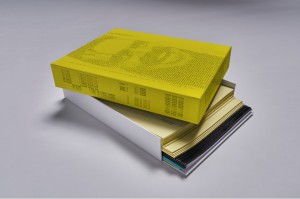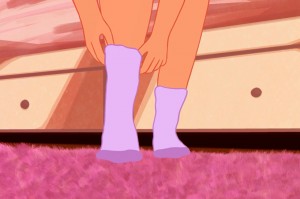In These Times: Pandemic Conversations – Amy Cummings
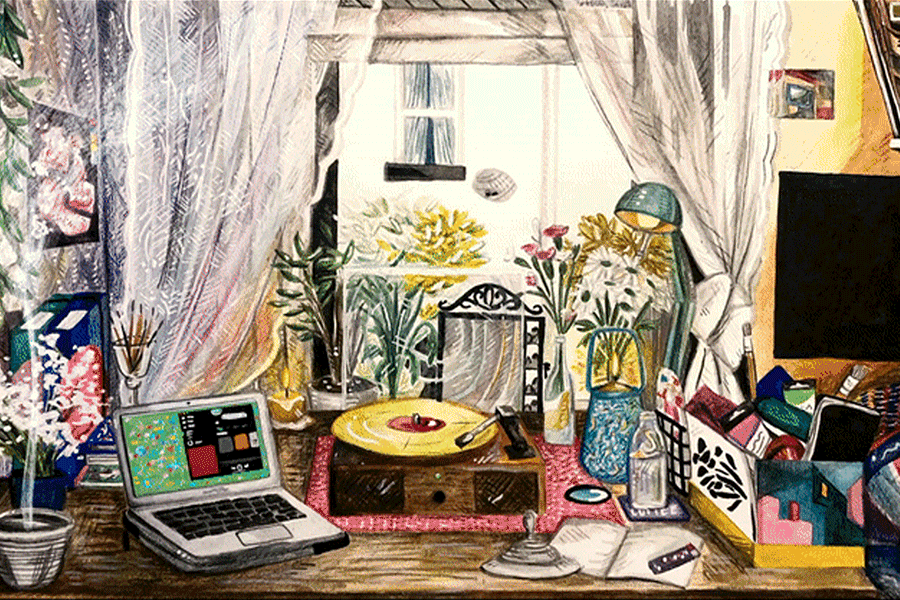
“Becoming more resourceful has been a very helpful part of this situation.” For our latest In These Times series in partnership with Liverpool John Moores School of Graphic Design & Illustration, we spoke to second-year student Amy Cummings about finding ways to adapt and maximise creativity over the last year…
The Double Negative: Are there any reoccurring themes that you’re raising in your work, intentionally or on reflection?
Amy Cummings: Most of the work I create is more visually inspired than inspired by narrative and context, I usually think more about visual elements than creating and representing deeper meaning. However, I am passionate about feminism, and where I have the opportunity to research into the history of feminism and strong female activists and artists, I gravitate towards this in my work. I’m interested in female creatives, and how they have created success in the face of adversity in their careers, and have created a lot of work in my degree surrounding female artists that inspire me. I am currently researching the history of Women’s suffrage in the UK for my final year graphic arts research project and focussing on the work involved in the success of the movement.
Visual reoccurring themes in my work include vivid colours, abstraction, and psychedelic imagery. I like to juxtapose contrasting elements – combining realism with abstract pattern, digital methods with physical, and hand drawn stills and digital animations.
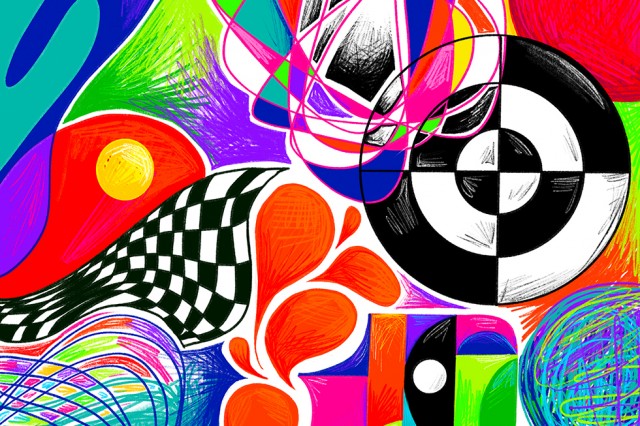
TDN: Can you tell me a little more about that blending of different styles and techniques?
AC: I like working in an abstract style because I feel that the lack of restriction allows me to work to the best of my creativity; however, sometimes I find it difficult to work purely from my imagination, which is why I often set up photographs as an anchor point to begin my drawings from, or for practice I find photos from my camera roll and draw from them as a quick drawing exercise. I find that when I’m working from a reference, I like to exaggerate the patterns and textures to abstract a realistic drawing, and with purely abstract work I like to include detailed tonal areas to juxtapose the abstract elements, crossing the boundaries of realistic and non-realistic.
TDN: Who or what inspires you?
AC: Female artists, for the adversity they face in their careers, particularly artists like Yayoi Kusama and Frida Kahlo as they overcame many struggles in their careers. I’m inspired by artists that go against what is expected of them, and are resilient despite any setbacks. I’m inspired by the work of Bridget Riley, as a female artist and a strong example of abstract art that inspires me, I love how her work is so simple yet so striking. I’m also inspired by orphism, Sonia Delaunay’s work being a strong source of inspiration for me. I also love the work of Hilma af Klint. I’m very inspired by editorial illustrators, and how they make accurate whilst also creative drawings in a quick turnover that are descriptive for their purpose, this is definitely something I would like to master over the rest of my degree.
TDN: How do you feel your practice has been affected by recent events globally and nationally?
AC: I definitely miss being in the studio, bouncing ideas off people and seeing other people’s work which I always found inspiring. However there is also more of an online community, which is nice because it is a great way of seeing other people’s work, and being in touch with people more consistently in and out of term time. I think a lot of people on our course have used this time to really expand and focus on their practices, and put effort into their social media presences. It can be easy to get disheartened and demotivated by the current situation, constantly working from the same desk in the same room. But also I feel that having this extra time for us to expand on our creative practices has benefitted a lot of us, and given us all a chance to pause and reflect on what is important to us.
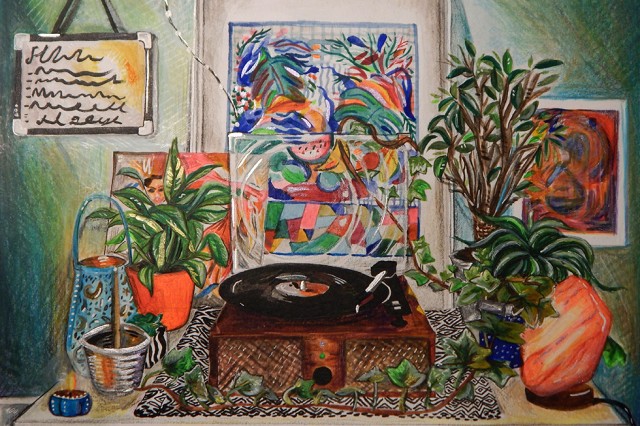
TDN: What approach will you take to your future learning, how has this experience changed you’re understanding of being a student and being in education?
AC: Hopefully, going back to the studio in September for the rest of my degree, I want to really take advantage of all the facilities that are available to us in the arts building, and to really harness all of the benefits of being in a studio environment. Whether that’s the facilities, spending time with course mates, asking for feedback and ideas from tutors and students, just generally making the most of everything we missed out on for the past year. I want to make the most of the printing facilities, such as the risograph machine and screen printing, and be more experimental with the facilities that we have access to that we couldn’t access at home, and won’t have direct access to after graduation.
TDN: Are there any positives to studying a practice-based course during a lockdown? Has this experience opened up any possibilities or opportunities you wouldn’t have considered before?
AC: Working completely from our devices this year has put more focus on having an online presence, which has lead to opportunities and contacts that may not have been accessed if we had been in the studio more. I also think becoming more resourceful has been a very helpful part of this situation, learning how to do printmaking from home and just generally teaching ourselves things that we want to know without the extra support of being in the studio. Having to be more self-driven is a benefit of this situation, which I think is a key part of being a freelance illustrator and therefore will benefit our future careers.
Making more connections online and adapting work for online use is a useful asset to have and has been a much more important part of this year than last year, all of our submissions having been online. This has made me improve the digital presentation of my work, which I think is so important because that is the way to access a wider audience, through posting work online. I think working more digitally has lead me towards more animation-based practice and gif making, which is a skill I look forward to building on in the future.
TDN: Have you learned anything new about yourself and/or your process?
AC: I have always thought of myself as fairly self-driven and resourceful, quite independent and someone that enjoys being alone; but being forced to work in isolation, without certain resources, facilities and people around to encourage me I have realised how much I depend on external sources. I think this has made me appreciate all the things we have all had to go without over lockdown, and understand how, even though it is powerful to be self-sufficient, there is so much to appreciate about working around other people and helping each other out.
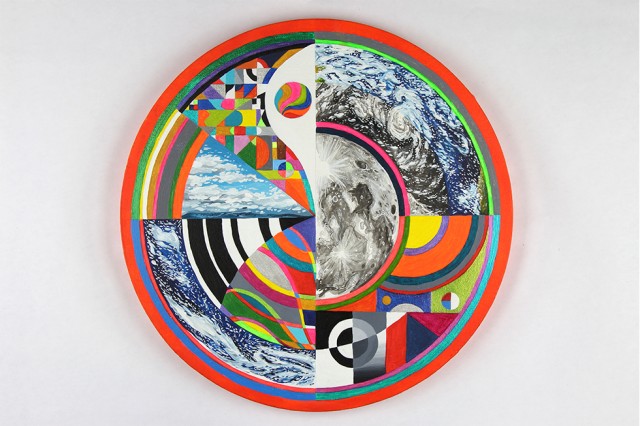
TDN: Do you have anything you’re working on now, or something on the horizon you’d like to tell us about?
AC: Having finished term for the summer I’m currently back to working on my series of abstract round canvasses. I started working on these last year in lockdown when I finished my first year; I wanted to build more on my abstract, visual-based work after working to briefs throughout first year. I started off by painting a series of small (20cm) round canvasses, and the one I’m currently working on is 60cm, which is the largest one so far. I’ve been sharing my process on Instagram, posting progress pictures and taking time-lapse videos as I’ve been working, as I find it interesting seeing other people’s process behind their work and so I think it is useful for me to also share mine. I also want to experiment more with animation over the summer, teaching myself to use after effects and adding animated elements to my round canvas designs as I think they hold a lot of potential for psychedelic-looking gifs and animations.
As told to Mike Pinnington
Check out more of Amy’s work. All images courtesy Amy Cummings
This profile is part of the series In These Times, a partnership between LJMU Graphic Design & Illustration and The Double Negative. Acknowledging the profound difficulties posed to students in the face of the COVID-19 pandemic, the series recognises outstanding work produced during this challenging time. Profiles of students selected by their peers will be published between April and June 2021.




